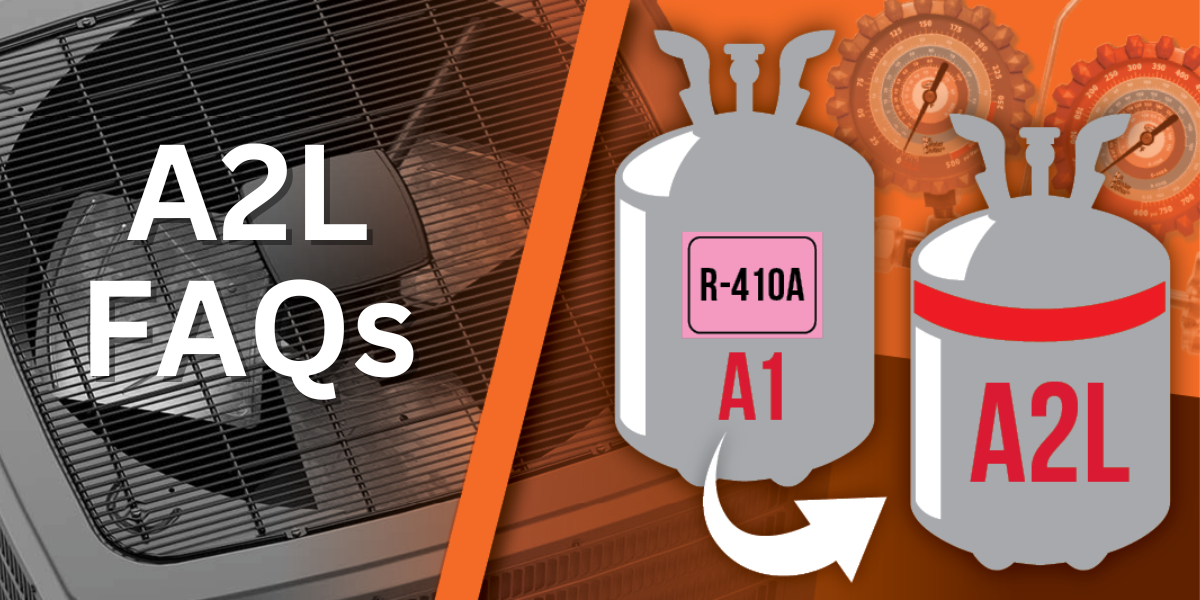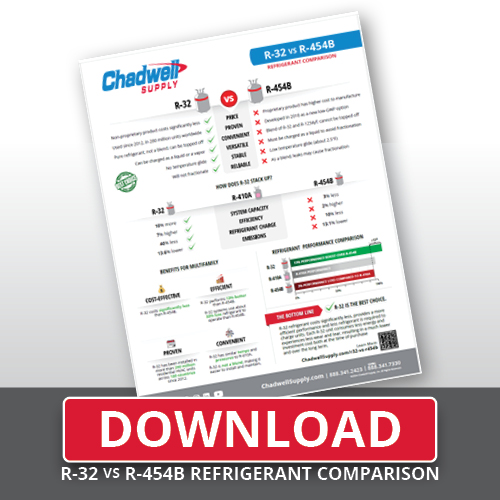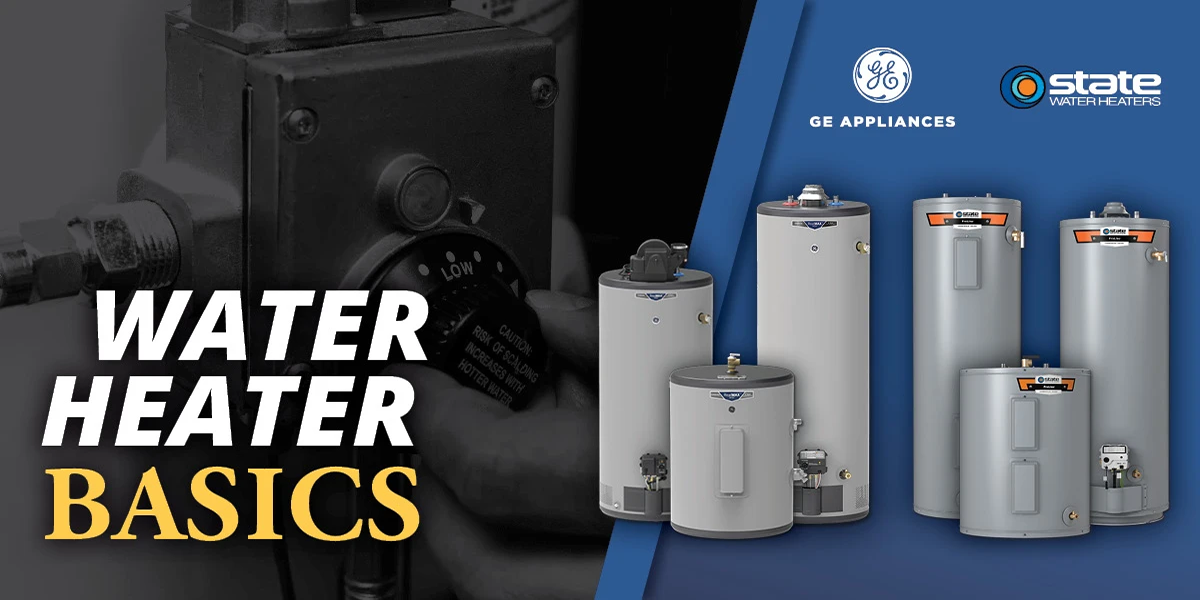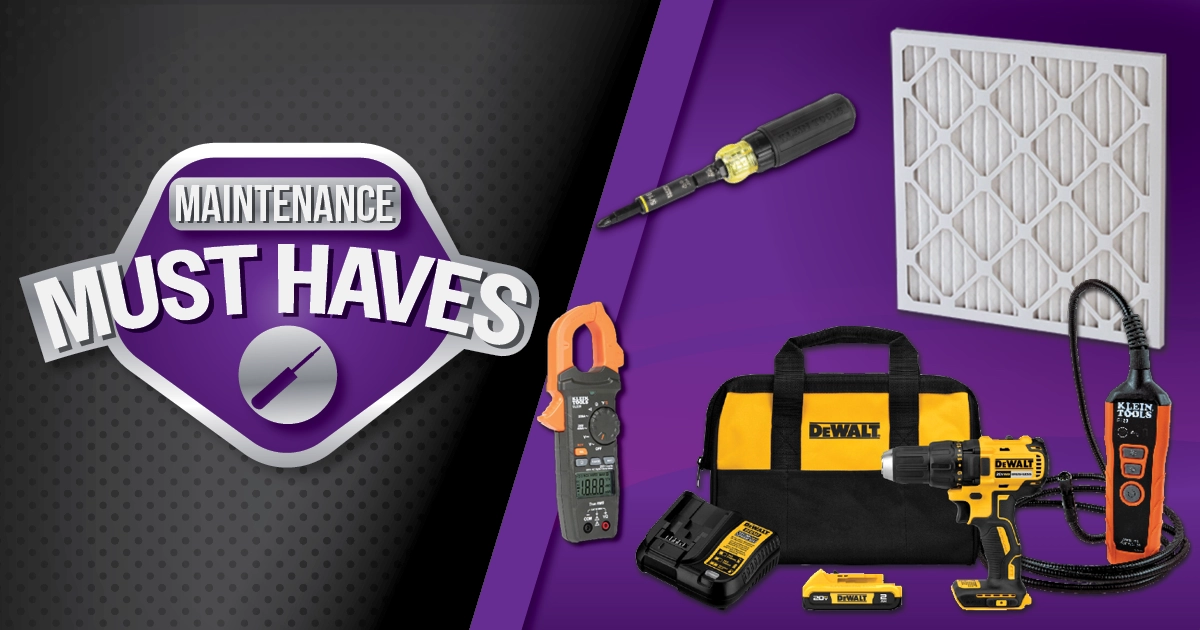R-32 vs. R-454b

R-32 refrigerant costs significantly less, provides more efficient performance, and less refrigerant is required to charge units. Each R-32 unit consumes less energy, with less wear and tear, with a much lower investment cost, at purchase and long-term.
The residential air conditioning marketplace is changing. Government regulations limiting the sale of R-410A compatible equipment have led to the introduction of A2L rated, low GWP refrigerants into the U.S. market. This shift is forcing multifamily property owners to make several important decisions.
If you want to know more about A2L refrigerants in general, check out this article for answers to FAQs about the A2L refrigerant transition.
Choosing an A2L Refrigerant: R-32 or R-454B?
There are two top contenders entering the U.S. marketplace: R-32 and R-454B. Both refrigerants are high-quality, A2L-rated, low GWP options. However, there is much confusion about which is the better option for multifamily.
Chadwell Supply believes, first and foremost, in serving our customers. After looking at R-32 head-to-head with R-454B, it’s easy to see why Goodman Manufacturing and Brothers Air Conditioning determined that R-32 is the best choice. It delivers four direct benefits to our multifamily partners.

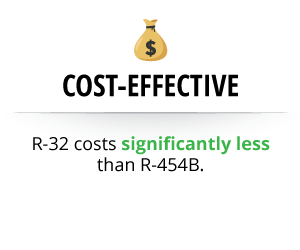
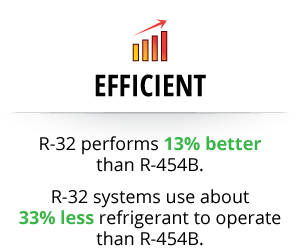
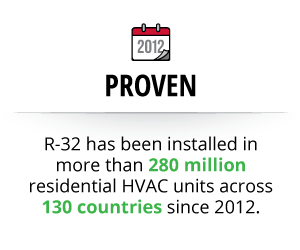

R-32 vs. R-454B
R-32 is a good balance of energy efficiency and environmental impact, at a much better value than R-454B, which is also being marketed under the name brands (Opteon™ XL 41, Solstice 454B, and Puron Advance). In a head-to-head comparison, R-32 wins on price, efficiency, stability, and convenience.

R-32 and R-454B vs. R-410A
When using R-410A as a baseline, here is how R-32 stacks up against R-454B:

R-32 Wins on Capacity and Efficiency
Based on metrics for capacity, efficiency, charge, and emissions, R-32 edges R-454B.
- R-32 delivers 13% more capacity than R-454B.
- 13% more performance may not sound like much, but think about how much efficiency 13% delivers when multiplied across hundreds or even thousands of A/C units.
More efficient units will typically have a longer life-span and will also require less energy to satisfy the thermostat.

R-32 is Simpler for Technicians
Because R-32 is not a blend, it is easier to install and maintain.
- Problems are easier to troubleshoot, because you always know exactly what refrigerant (and how much of it) you are dealing with.
- R-32 can be topped off and recharged in both liquid and gas phases without changing the composition.
- Able to be recovered and reused onsite (if refrigerant is clean).
- R-32 temperature and pressures are similar to R-410A, so there is less of a learning curve.
R-32 is Proven and Trustworthy
As of 2024, there are an estimated 280 million R-32 units in use, providing efficient, environmentally friendly climate control to people in 130 countries. Every one of those 280 million units is proof that R-32 is safe, efficient, and trustworthy. Having reviewed all these factors, Chadwell Supply chose to go with R-32 in our entire exclusive brand Brothers Air Conditioning line.
Stay Informed Through Every Market Shift
For more information about R-32, A2Ls, and other multifamily HVAC topics, be sure to check out Chadwell Supply’s library of additional resources including:

